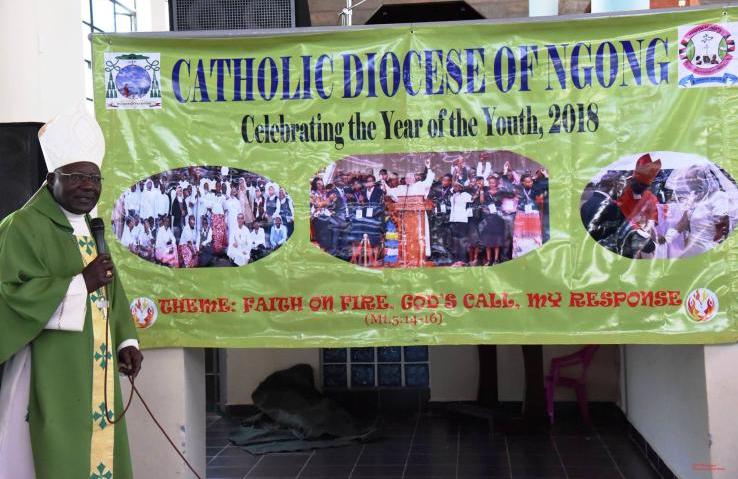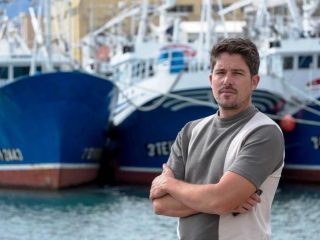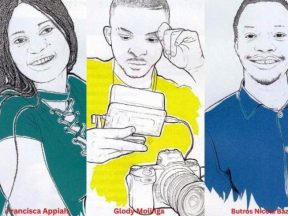Youth Synod: “Young people are a treasure for our people”.

In view of the XV General Assembly of the Synod of Bishops, dedicated to young people, to be held next October 2018, many local churches are organizing activities and events with the youth. A few examples.
In Kenya, the diocese of Ngong has organised the Year of Youth whose theme is: “You are the Light of the world”. Mgr. John Oballa Owaa, Bishop of Ngong, who is also vice president of the Bishops’ Conference of Kenya, highlighted that “young people have enthusiasm, hope and are full of joy and their heart desires to know the truth.
The ideal of the young is to witness the Gospel in a more just and free society and the Holy Father wonders how they can announce to the world the good news of joy and how they can play an active role in being announcers of this Good News”.
“Young people need to see how Christ does things: this will enable them to learn how to discern, to know their own vocation, whether it is marriage or consecrated life or priesthood. Through faith they will be able to know how to make decisions and make wise choices for their lives”, he added.
During the Year the “instruments of evangelization” such as a Holy Bible, the Catechism of the Catholic Church, the Holy Rosary and a candle are ready to be used to accompany young people throughout the year.
The Bishop emphasised that “there are many places, opportunities and sources that young people can use to discern God’s plan for their lives”, such as studying the Bible, liturgy, participation in the activities of the Christian community and pilgrimage to the holy places. The hymn for the Year of Youth, in the Swahili language reads: “Simama imara katika imani, usiogope“, which means “Be strong in faith, do not be afraid”.
The leaders of the Latin American Youth Pastoral after having concluded the XIII Youth Pastoral Regional Meeting in Mexico-Central America in the city of San Jose, in Costa Rica, they released a note which states: “Young people are a treasure for our people, a wealth that generates joy, hope, and the ability to dream, to show sensitivity and solidarity for those who suffer. In these difficult times, God calls each one by name, so that he may be the protagonist in the transformation of these realities, a transformation in the light of the Gospel and of the Magisterium of the Church”.
Delegations from Mexico, Guatemala, El Salvador, Honduras, Nicaragua, Costa Rica and Panama participated in the meeting with the aim of reflecting, in communion with the universal Church, on youth Pastoral in the region, in view of the Synod of Bishops dedicated to “Youth, Faith and Vocational Discernment”. “We are thrilled – the note continues – because the Church has set its sights on young people and promotes spaces for participation so that young people, with their dynamism, will know how to renew structures and pastoral action”.
The young Catholics of Pakistan express satisfaction and hope because the Catholic Church, through the Synod dedicated to young people, is interested in their future. Ashiknaz Khokhar, coordinator of a youth group, said: “I am pleased that the Church has given youth the opportunity to take part in a survey to let them know what they think and how the Church can help them grow in following of Christ. We are happy to hear that cardinals, bishops, priests, nuns and lay people are working to make the Synod of Bishops a truly participatory event that takes into consideration the various areas of the world. We in Pakistan are full of hope”.
In Papua New Guinea, the year 2018 has been proclaimed the “Year of Youth” by the local Church. It will be a precious opportunity to help young people understand, live and witness their faith in Christ Jesus.
Father Ambrose Pereira, a Salesian, Director of Youth Department in the Episcopal Conference of Papua New Guinea and Solomon Islands, said: “It was aimed at bringing together the youth animators in order to enable them to interact, network and reflect on the Synod dedicated to young people: this was the meaning of the various speeches that followed, which placed particular emphasis on living their Catholic life with the Eucharist and Sacrament of Reconciliation, helping the young to understand the need for committed love and preparing them for the Sacrament of Matrimony”.
Sr Aurora Yolanda Pugal, of the Sisters of St. Joseph, said : “A positive attitude is what young people need to learn to develop. Youth animators need to help young people move from their weakness and use their strengths to bring about the change they desire.
The Year of the Youth was opened in the Archdiocese of Tai Yuan, in the province of Shanxi, in the northern part of the People’s Republic of China. The general theme of the Year is “To seek God, to walk together in the universal Church”.
The Year of the young is divided into five stages, each marked by a verse of the Gospel: to search; vocational promotion; the knowledge of the Church; “Alleluia”, contest of sacred songs; the hope and the pilgrimage of young people.
Mgr. Paolo Meng Ning You, the diocesan bishop said: “Faith and vocation are two elements that are well connected. We must accompany the journey of the young and their vocational discernment in a secularised world. They are the future of the world and of the Church. We hope that, thanks to initiatives like this one, dedicated to young people, new vocations of young people who wish to give themselves to priesthood and to consecrated life can flourish. In this way we can continue to send missionaries to the communities that need them”.











